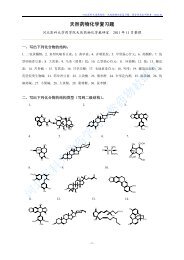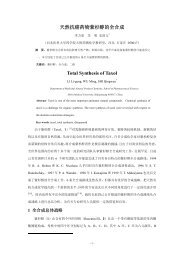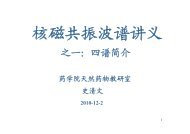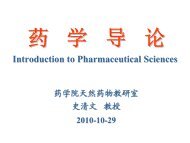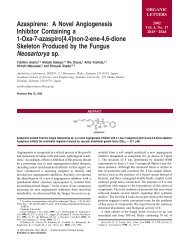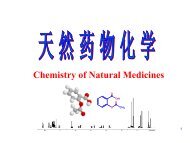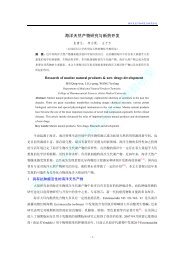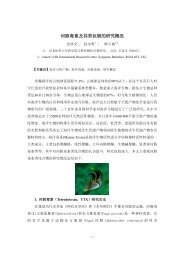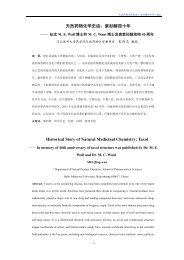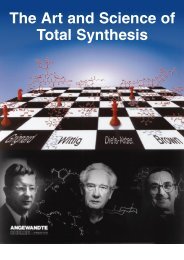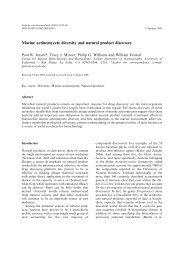Total Synthesis Highlights
Total Synthesis Highlights
Total Synthesis Highlights
You also want an ePaper? Increase the reach of your titles
YUMPU automatically turns print PDFs into web optimized ePapers that Google loves.
The enantioselective Cu-catalyzed cycloaddition of the reactive enone 4 to the alkyne 5 proceeded<br />
efficiently, but with only modest enantiomeric excess. This was improved at a later point in the<br />
synthesis, by recrystallization of 2.<br />
The folded geometry of 1 directed the Grignard addition, to give, after protection, the ester 7.<br />
Homologation to the allylic alcohol 8 set the stage for Grubbs ring closure, to give, after oxidation,<br />
the tricyclic sulfone 9, having the skeleton of triclavulone 3.<br />
There were two more stereocenters to set. It was expected that cuprates would add to the open face<br />
of the strained cyclobutene. The control of the other stereocenter was more problematic. One<br />
solution was to prepare an α-sulfonyl lactone. To this end, the ketone was converted to the<br />
secondary carbonate. As hoped, conjugate addition was followed by intramolecular acylation, but<br />
the reaction continued to full acyl transfer, to give 10. Fortunately, desilylation of 10 proceeded<br />
with concomitant lactonization. Desulfonylation then gave 2, which could be brought to high ee<br />
by recrystallization.<br />
With 2 in hand, the rest of the synthesis proceeded smoothly. Reprotection followed by reduction<br />
and oxidation gave the keto aldehyde 11. Condensation of the keto phosphonate 12 with 11 gave<br />
the enone 13. Enantioselective transfer hydrogenation of 13 gave the allylic alcohol 14 with 11:1<br />
diastereoselectivity. Protecting group interchange then gave triclavulone 3, identical in every<br />
respect with natural material.



